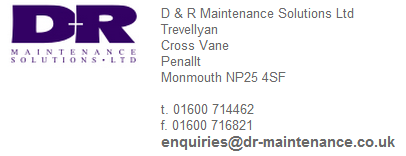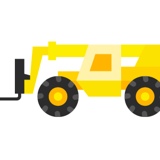Information
-
Document No.
-
Incident type
-
Client / Site
-
Investigation Started On
-
Prepared by
-
Site Photo
-
Location
-
Personnel
Executive Summary
-
Background
-
Conclusions Drawn
-
Cost to the Organisation
Recommendations
-
Recommendations
-
Method of Investigation
Part 1 - To be Completed Immediately Upon Notification
-
Initial Report Made by
-
Method of reporting
- Accident report
- Phone Call
- Face to Face
- Fax
- Other
-
How Reported
-
Date of Incident if Known
-
Time of Incident if Known
-
If there were more than 10 Casualties - How Many?
-
Other Notes
-
Date that the report was made to the Corporate & Public Safety Unit
Part 2 - Initial Assessment
To be carried out by the person responsible for Health & Safety
-
Type of Incident
-
Potential for Harm
-
Incident Number and description of incident including any information onwhy the correct method was not used.
-
Copy of the incident report
-
Is the incident reportable to the HSE under RIDDOR
-
Date reported
-
RIDDOR Incident Report Number
-
Category
- Fatality
- Fracture
- Laceration
- Incision
- Puncture
- Abrasion
- Contusion
- Sprain
- Strain
- Dislocation
- Burn
- Scald
- Chemical
- Loss of Sight
- Amputation
- Drown/ Asphyxia
- Medical
- Other
- No Injury
- Property Damage
-
RIDDOR Report
-
Managers Name
-
Actions already taken by the Manager
-
Further people involved in the investigation including how involved and/or job title
Part 3 - Investigation Information Gathering
1. Location of the Incident
-
General Photo of Site
-
Location
2. About the Injured Person/s
-
Was there an injury?
-
Name of person who was injured / suffered ill health or was otherwise harmed with the incident.
-
Address
-
Was the injured person alone?
3. How did the incident Happen - (Note any Equipment involved)
-
Description of Incident
4. What Activity was taking place
-
Activity/ies
5. Was there anything different from the norm or unusual about the working conditions? (Include weather conditions if known/relevant)
-
Conditions
6. Working Procedures
-
Are there adequate documented safe working procedures?
-
Would it be reasonable to assume that a safe Working Procedure or Method Statement should have been produced?
-
Were these Procedures Followed?
7. Effect of the Incident
-
How Affected
- Fatality
- Fracture
- Laceration
- Incision
- Puncture
- Abrasion
- Contusion
- Sprain
- Strain
- Dislocation
- Burn
- Scald
- Chemical
- Loss of Sight
- Amputation
- Drown/ Asphyxia
- Medical
- Other
- No Injury
- Property Damage
-
If there was an injury, how did it Occur and what caused it
- Assault
- Abuse
- Cut by Sharp Object
- Electrical
- Caught in Machinary
- Asphyxia/Drowning
- Explosion
- Contact with Fire or Hot Object
- Hit by Moving Object
- Hit something Stationary
- Hit by Vehicle
- Injured by plant or animal
- Lifting / Carrying
- Slip, Trip, Stumble or fall
- Fall From Height
- Contact with Hot Liquid
- Contact with chemical substance
- Medical Condition
- Near Miss
-
Notes
-
Description of object
-
Dimensions; Height Width Depth Weight
-
Approximate speed
-
Photo
-
Name of Assailant if known
-
Notes
-
Type of object (e.g. knife / glass...)
-
Source of Electricity
-
Voltage
-
Make and Model of Machinery
-
Colour
-
Serial Number
-
Are all safeguards still in place
-
Type of Watercourse
-
Are rescue aids available
-
Cause of explosion (eg gas bottle..)
-
Extent of damage (100metres ...)
8. Risk Assessment
-
Is there a documented risk assessment for the task? (if yes, include a copy)
-
Was the risk identified?
-
How is this risk controlled?
9. Organisation and Arrangement of the work
-
Did the organisation and arrangement of the work influence the adverse effect?
10. Maintenance
-
Is the equipment/Area regularly checked for defect?
-
When was it last inspected?
-
Were any defects noted?
-
Is the maintenance and cleaning suitable and sufficient
11. People Involved - Competencies
-
Person
-
Name
-
Can the competency of this person be demonstrated?
-
Qualifications?
-
Training?
-
Experience
-
Other?
-
Is there anything about this person that would increase the risk? e.g. were they alone?
12. Workplace Layout
-
Did the workplace layout influence the adverse effect?
13. Materials, Plant and Equipment
-
Did the nature or shape of the materials influence the adverse event?
-
Did difficulties in using the plant/equipment influence the adverse effect?
-
Was the safety equipment suitable & sufficient?
-
Was PPE required? If so what would be reasonably expected.
-
Was it Issued?
14. Other conditions
-
Did any other conditions influence the advers event?
Part 4 - Analysis
1. Immediate Cause
-
Brief Description of the Immediate Cause
2. Route Cause Analysis Tree
-
Analysis Tree
3. Underlying Causes
-
Underlying Cause List
4. Route Causes
-
Identified Route Causes
-
Heading
-
Descritption
5. Similar Risks
-
Are any other areas within the organisation have similar risks?
-
Who and Where?
-
Have any similar incidents previously occurred within the organisation?
-
Who and Where?
Part 5 - Control Measures Required
-
These will be seen at the start of the document as actions required.
Control
-
Control Description
Part 6 - Risk Action Plan
1. Risk Assessment
-
Is the Risk Assessment Suitable and Sufficient as it stands?
-
Notes
-
Date to be completed
-
Responsible Person
2. Method of Work
-
Is the Method Statement / Safe Working Practice Suitable and Sufficient?
-
Notes
-
Date to be completed
-
Responsible Person
Part 7 - General
1. Costs
-
Estimated Cost | Item
-
Total Cost (£)
2. Personnel
-
Members of the Investigation team (Name and Position)
-
Distribution List (Name and Position)
-
Signed on behalf of the Investigation Team
addendum 1 - Relevant Legislation
1. Legislation
-
Legislation
-
Relevant Legislation
- Health & Safety at Work Etc Act 1974
- Management of Health & Safety at Work Regulations
- Control of Asbestos Regualtions 2012
- Construction (Design and Management) Regulations 2015 (CDM 2015)
- Confined Spaces Regulations 1997
- Control of Substances Hazardous to Health Regulations 2002
- Safety Representatives and Safety Committees Regulations 1977 (as amended)
- Dangerous Substances and Explosive Atmospheres Regulations 2002.
- Work with display screen equipment: Health and Safety (Display Screen Equipment) Regulations 1992 as amended by the Health and Safety (Miscellaneous Amendments) Regulations 2002
- Health and Safety (First-Aid) Regulations 1981
- Control Of Legionella
- Lifting Operations and Lifting Equipment Regulations 1998
- Manual Handling Operations Regulations 1992 (as amended)
- Control of Noise at Work Regulations 2005
- Personal Protective Equipment at Work Regulations 1992 (as amended)
- Pressure Systems Safety Regulations 2000
- Radiation (Emergency Preparedness and Public Information) Regulations 2001
- Control of Vibration at Work Regulations 2005
- Workplace health, safety and welfare. Workplace (Health, Safety and Welfare) Regulations 1992
- Provision & Use of Workplace Equipment
- Other
-
Specifics
2. Case Law
-
Relevant Cases
-
Case Name
-
Detail
-
Press Cuttings
Addendum 2 - Evidence Gathered
1. Physical Evidence
-
Was any Equipment involved?
-
Has it been seized / Taken out of use?
-
Serial Number
-
Description
-
Photos
-
Are there suitable and sufficient maintenance records?
-
Item
-
Other Notes
2. Witnesses
-
Name
-
Has this person given a statement?
-
Copy of Statement
-
Any Special Notes
-
Notes
3. Photographic Evidence
-
Aerial View
-
Other Photos
4. Documentation
-
Relevant Documents
-
Document Name or Reference
-
Document - Relevant Pages
Correspondance
-
Method of Communication (add image if available)
-
Text of email
-
Copy of Letter
-
Received
-
Date/Time of call
-
Call Between
-
Notes made
-
Image of notes if handwritten
5. Other Evidence
-
Type
- Drawing
- Photo
- Audio/Video
- Weather
- Text
- Barcode
-
Add drawing
-
Add media
-
Add media
-
Add media
-
undefined
-
undefined
-
undefined
-
undefined















